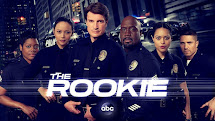In a prior post, I refer to television shows that use scenarios as an excuse to explore "human interest" problems. The Rookie with Nathan Fillion oddly falls into this category. It isn't that the police job is entirely irrelevant, but the entire purpose of the police job is how it creates different scenarios that impact the individual characters.
In comparison, when Jamie in Blue Bloods encounters different scenarios as a police officer on the streets, the episode focuses on how he solves the scenarios as a police officer.
Obviously, I prefer Blue Bloods' approach, no matter how much I like Nathan Fillion.
However, there is a variation on "scenarios to create human interest" that greatly amuses me:
"Scenarios to create interesting visuals."
Filmmakers are, by their nature, fascinated by visuals. And sometimes, the visual is simply too interesting to pass up. While watching The Crown, I often feel like historical events are chosen for an episode less for their relevancy at the time and more for the cool visual effects they may create. The Great Smog in Season 1, Episode 4, "Act of God," is one example (it was relevant to the era; was it all that relevant to the royal family?).

How much fun and what a challenge for the camera!



1 comment:
The visual can be compelling but shallow. There are films that are visually superb but the story doesn't hold up. There are films that are the opposite well-written but pedestrian visually. However, when the two come together it is magic.
Post a Comment